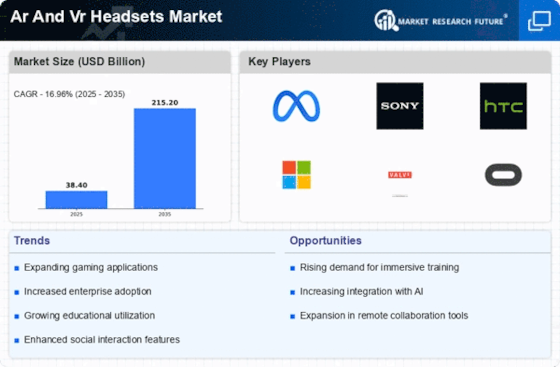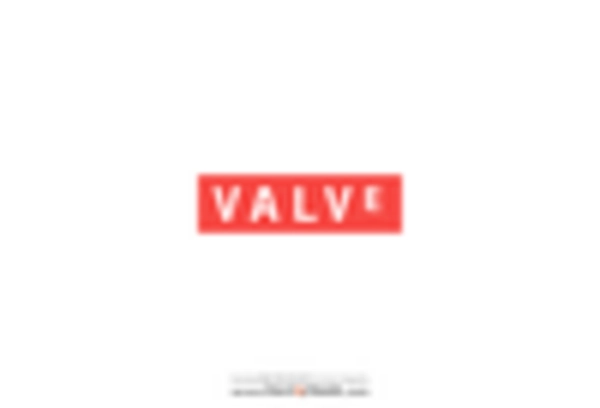Advancements in Hardware and Software
Technological innovations play a pivotal role in the Ar And Vr Headsets Market, driving the development of more sophisticated hardware and software solutions. Recent advancements in display technology, such as higher resolution screens and improved field of view, enhance the overall user experience. Additionally, the integration of artificial intelligence and machine learning algorithms into VR applications is creating more personalized and responsive environments. The market is projected to grow at a compound annual growth rate of around 25% over the next few years, largely due to these advancements. As manufacturers continue to refine their products, the Ar And Vr Headsets Market is likely to attract a broader audience, including those who may have previously been hesitant to adopt such technologies.
Growing Demand for Immersive Experiences
The Ar And Vr Headsets Market is witnessing a surge in demand for immersive experiences across various sectors. Consumers increasingly seek engaging content that enhances entertainment, gaming, and social interactions. This trend is reflected in the projected growth of the market, which is expected to reach approximately 30 billion USD by 2026. As more individuals embrace virtual and augmented reality technologies, companies are investing heavily in developing innovative applications that cater to this demand. The rise of social VR platforms and immersive gaming experiences further fuels this growth, indicating a shift in consumer preferences towards more interactive and engaging forms of entertainment. Consequently, the Ar And Vr Headsets Market is poised for substantial expansion as it adapts to meet the evolving expectations of users.
Increased Investment in AR and VR Startups
The Ar And Vr Headsets Market is experiencing a notable increase in investment from venture capitalists and tech giants alike. This influx of capital is primarily directed towards startups focused on developing innovative AR and VR solutions. In 2025, investments in this sector are expected to exceed 10 billion USD, reflecting the growing confidence in the potential of these technologies. Such financial backing enables startups to accelerate their research and development efforts, leading to the creation of cutting-edge applications and devices. As a result, the Ar And Vr Headsets Market is likely to see a diversification of offerings, catering to various sectors including healthcare, education, and entertainment, thereby broadening its appeal and market reach.
Expansion of AR and VR Applications in Healthcare
The application of AR and VR technologies in healthcare is rapidly expanding, significantly impacting the Ar And Vr Headsets Market. These technologies are being utilized for medical training, patient treatment, and surgical simulations, enhancing the quality of care and training. The market for AR and VR in healthcare is projected to grow at a rate of approximately 30% annually, driven by the increasing recognition of their benefits. Medical professionals are leveraging these tools to improve patient outcomes and streamline procedures, indicating a strong trend towards the integration of immersive technologies in healthcare settings. This expansion not only boosts the Ar And Vr Headsets Market but also underscores the transformative potential of these technologies in improving healthcare delivery.
Rising Popularity of Remote Work and Collaboration Tools
The shift towards remote work has catalyzed the adoption of AR and VR technologies in collaborative environments, significantly influencing the Ar And Vr Headsets Market. Companies are increasingly utilizing these technologies to facilitate virtual meetings, training sessions, and team-building activities, creating immersive workspaces that enhance productivity. The market for AR and VR collaboration tools is expected to grow substantially, with estimates suggesting a potential increase of over 20% in the coming years. This trend reflects a broader movement towards integrating advanced technologies into everyday work practices, as organizations seek innovative solutions to maintain engagement and collaboration among remote teams. Consequently, the Ar And Vr Headsets Market is likely to benefit from this growing demand for virtual collaboration solutions.


















Leave a Comment